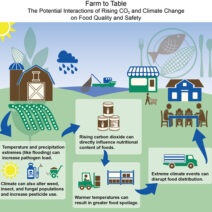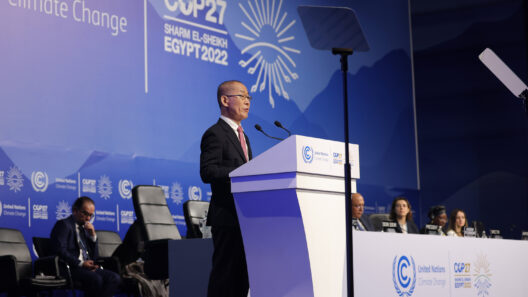Climate change remains one of the most pressing issues of our time, and myriad organizations have sprung into action, armed with diverse strategies to combat global warming. This raises an intriguing question: are these organizations effective in their mission, or are their efforts akin to moving deck chairs on the Titanic? While some organizations have made substantial strides, the challenge ahead is monumental, and the efficacy of their initiatives warrants scrutiny.
At the forefront of the battle against climate change are non-profit organizations that fervently advocate for policy change, educational outreach, and sustainable practices. Groups like the World Wildlife Fund (WWF) and Greenpeace have vigorously campaigned for legislation aimed at reducing carbon emissions. By pressuring governments and corporations alike, these organizations endeavor to implement stricter regulations that limit fossil fuel use and promote renewable energy sources. The results of such advocacy have been rather encouraging; many countries are pledging to transition to greener policies, thereby signaling a shift in global awareness towards the necessity of combating climate change.
While legislative advocacy is pivotal, it’s equally vital to examine grassroots movements. Organizations such as 350.org mobilize citizens around the world, igniting a community-driven approach to environmental activism. Through global climate strikes, educational workshops, and local projects focused on tree planting or renewable energy installations, grassroots organizations build awareness and encourage individual actions that contribute to a larger purpose. These initiatives serve not only to reduce carbon footprints but to empower individuals to envision themselves as agents of change.
In academia and scientific communities, research organizations play a crucial role. Institutions like the Intergovernmental Panel on Climate Change (IPCC) disseminate empirical data that informs climate policy and public understanding. Their reports have documented the urgent need for transformative change and illuminated the consequences of inaction. By translating complex scientific data into digestible and impactful narratives, these organizations ensure that both policymakers and the general public comprehend the stakes involved in global warming.
However, the question persists: are these organizations winning the war against climate change? The answer is decidedly multifaceted. While significant accomplishments exist, the underlying threat continues to loom large. Despite the pledges from numerous countries to reach “net-zero” carbon emissions, the actual implementation often lags behind. Political inertia, coupled with lobbying from the fossil fuel industry, significantly hinders progress. This lack of coherence between commitments and actions raises concerns about the sincerity of many stakeholders.
Moreover, while organizations are laboring earnestly to combat climate change, they face uphill battles against misinformation and apathy. Climate denialism, often perpetuated by vested interests, undermines the credibility of scientific evidence and the urgency of action. Countering such narratives requires not only robust evidence but also innovative communication strategies to engage skeptics and inspire action. This is where organizations must channel their efforts creatively to enlighten and galvanize the public.
The involvement of corporations in the fight against climate change is also noteworthy. As consumer awareness increases, many companies have begun to adopt sustainable practices and invest in renewable energy. Organizations like the Carbon Disclosure Project (CDP) are working with businesses to disclose their carbon emissions and set sustainability targets. However, the effectiveness of these initiatives can sometimes be overshadowed by “greenwashing,” where companies exaggerate their environmental efforts to enhance public image without making substantial changes to their operations.
Additionally, international collaborations such as the Paris Agreement signify a global consensus on the urgency to address climate change. However, translating international agreements into tangible local actions remains a colossal challenge. For organizations, bridging this gap involves fostering partnerships that facilitate technology transfer, capacity building, and community engagement. The global nature of the climate crisis demands coordinated action from local to international levels.
One cannot overlook the role of technological innovation in the fight against climate change. Organizations are increasingly turning to cutting-edge technologies to mitigate emissions and enhance sustainability. From carbon capture and storage (CCS) to advances in renewable energy technology, the potential for innovation presents exciting opportunities. However, technological solutions alone are insufficient; they must be integrated within a holistic approach that emphasizes systemic change and responsible consumption.
So, back to the original question: are organizations fighting global warming—and are they winning? The answer is a complicated amalgamation of triumph and tribulation. While there are clear victories, the battlefield is riddled with obstacles that require unwavering perseverance and creativity. The fight against climate change necessitates a multi-faceted approach that incorporates advocacy, grassroots movements, corporate responsibility, scientific research, and technological innovation.
Ultimately, the question extends beyond mere effectiveness; it implores society to engage in collective action. Organizations alone cannot reverse the tide of global warming. Every individual must recognize their role in this global challenge, understanding that small steps can culminate in significant change. Whether through reducing personal carbon footprints, advocating for local sustainability initiatives, or simply spreading awareness, everyone has the potential to contribute to the collective fight against climate change.







